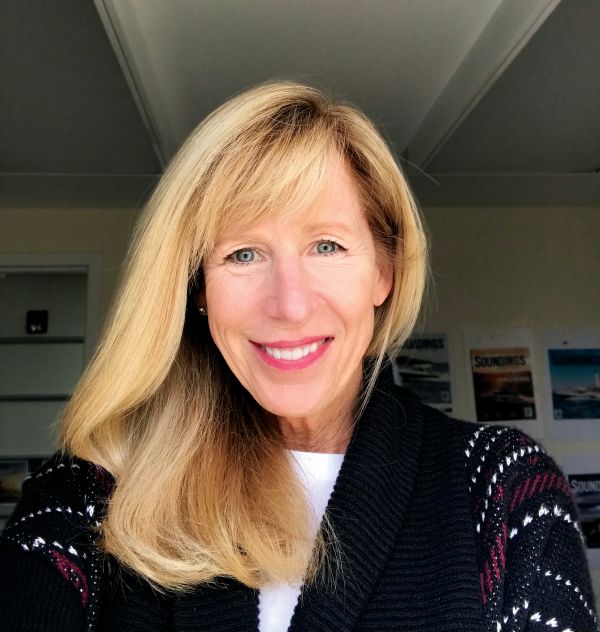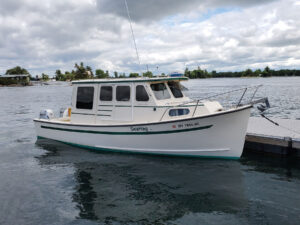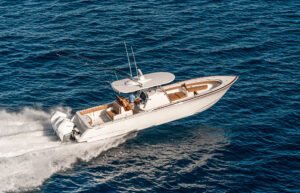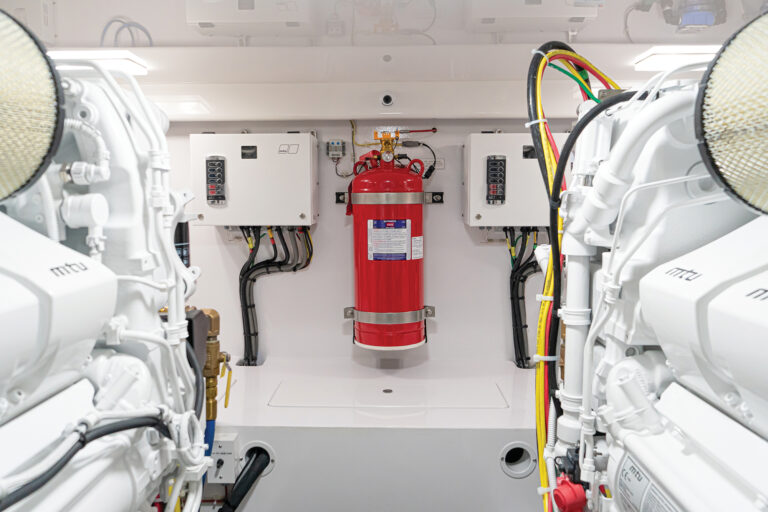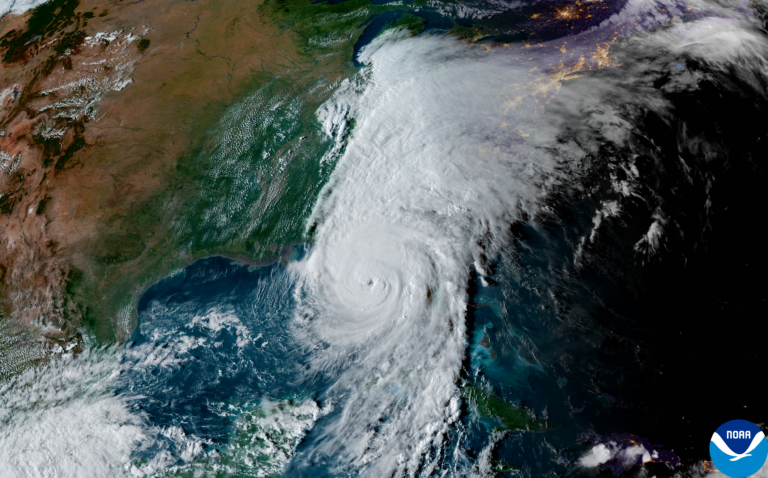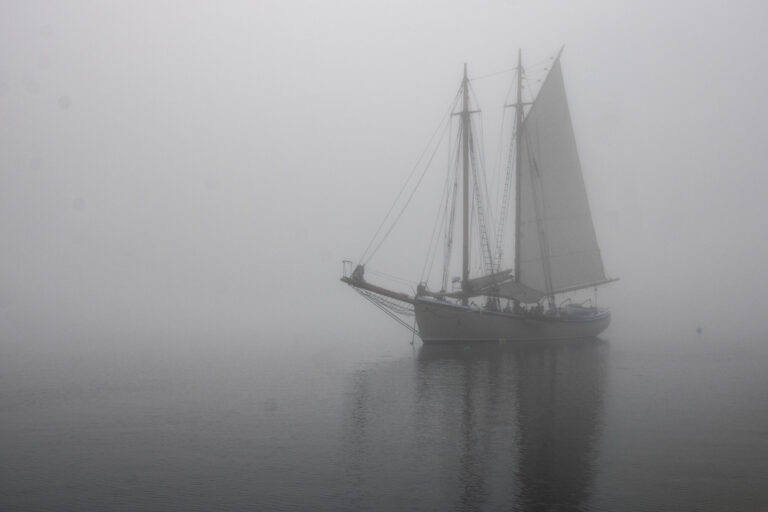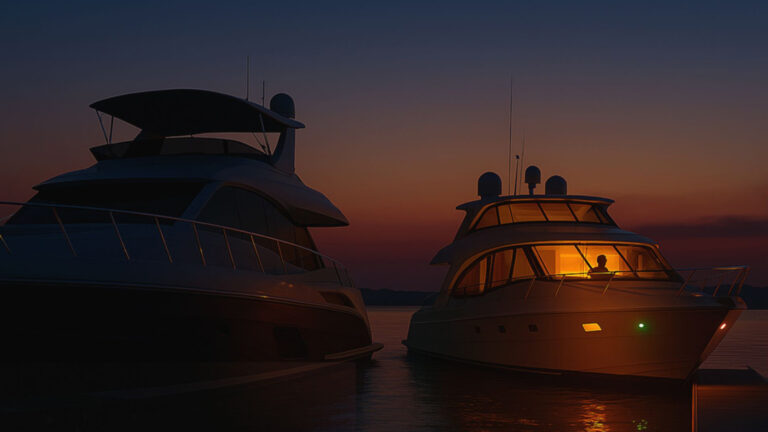
In a perfect world, we could all afford multiple boats—maybe one for fishing with the guys on Saturday and another for sandbar hopping with the family on Sunday. In the real world, though, many of us invest in one boat that we hope can do it all.
If fishing and family time are your top priorities, a dual-console design like the Pursuit DC 266 makes sense. It’s the fifth model in the builder’s dual-console lineup that extends from a 235 to a 365.
Aboard this 27-footer, the multipurpose features are most evident in the cockpit. The rod holders, high freeboard, padded coaming bolsters, and transom with 20-gallon live well and 31-gallon fishbox are designed to appeal to anglers. At the same time, fold-down bench seats are a great place to plop the kids after a day of tubing—a ski tow pole is an option. Other family features include a head compartment in the port console that doubles as a changing space, and a freshwater shower at the transom, for use after a saltwater swim.
Seating can be a thorny topic for those shopping dual consoles. Some owners want lounges to be as comfortable as those on a more traditional cruiser, but that’s just not feasible on a boat built to fish half the time. To its credit, Pursuit does a nice job enhancing the comfort of the port and starboard bow lounges with details like fold-down armrests and premium upholstery. There’s also a removable sunpad that converts the whole area into a hangout space.
Another nice feature on the Pursuit is the tempered glass windshield with a vacuum-infused fiberglass frame. It’s high and robust, and just right for long runs home in a stiff chop when you need protection from the spray. The DC 266 is offered with an integrated fiberglass hardtop, too. Vertical clearance is 7 feet, 10 inches.
Standard power is a pair of 200-hp Yamaha outboards. With those motors, the boat cruises most efficiently at 3500 rpm, according to Pursuit, with a speed of 24.7 mph, fuel burn of 11.3 gph and a range of 307 miles. The motors push a deep-V hull with 21 degrees of deadrise that should be well suited for coastal waters of the Northeast.
This article originally appeared in the July 2019 issue.


